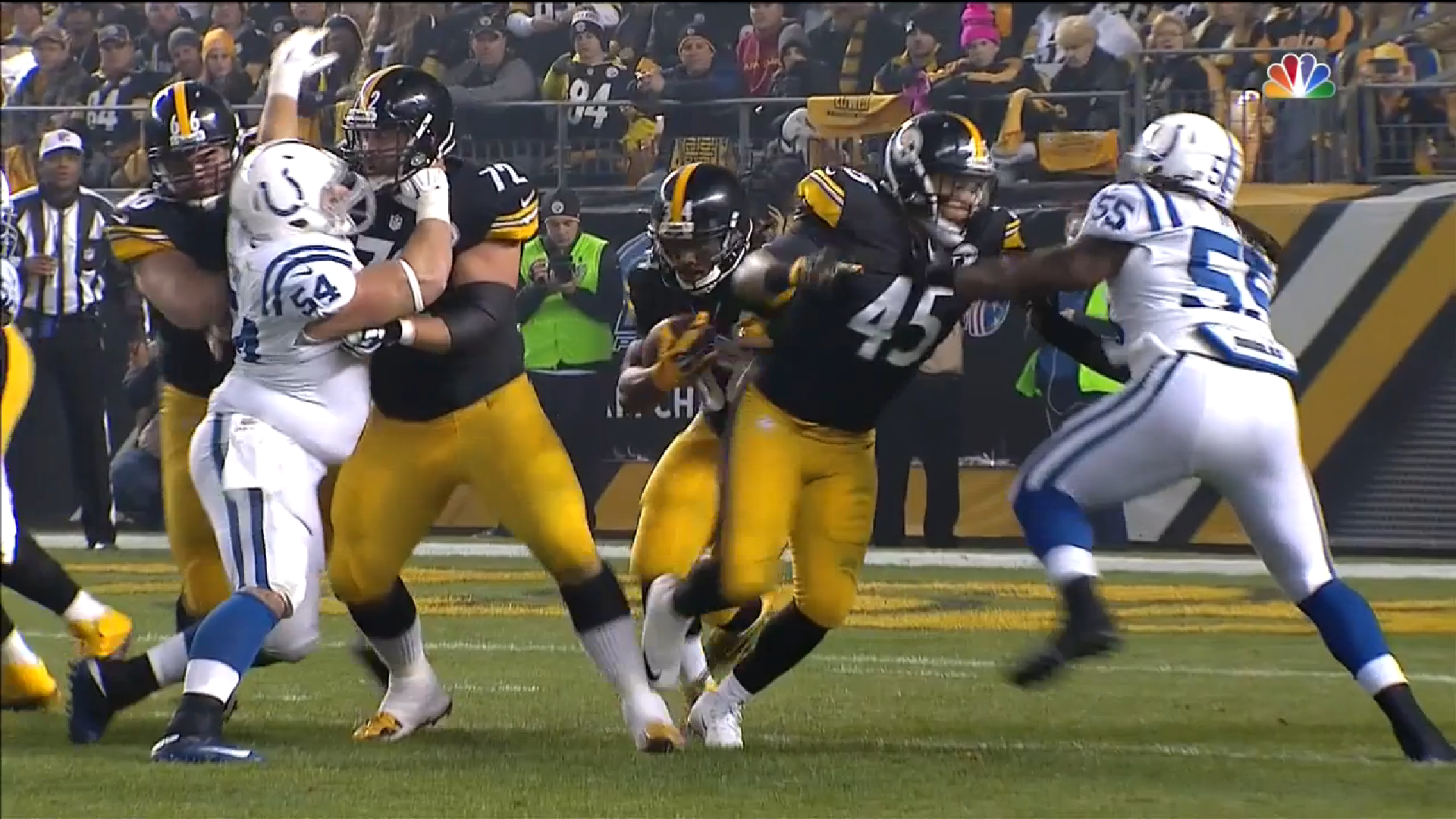The Pittsburgh Steelers have for years now wanted to establish themselves as a team with a greater running presence than they have shown over the course of most of the past decade, largely since the core offensive line of the 2000s eroded and the focus of the offensive side of the ball shifted more and more to Ben Roethlisberger and the passing game.
Annually, it seems, the rushing statistics grew worse and worse, reaching a tipping point at the start of the decade when the Steelers felt the need to begin replenishing the offensive line, a process that may still be undergoing a few more tweaks before all is said and done.
One of the philosophical shifts that transpired between now and then was the eradication of the fullback as an enclosed, stand-alone position, since 2007 when Bruce Arians took over as offensive coordinator. Even under Todd Haley, the team had not really fully gotten back to a true fullback until 2015, when they stumbled upon Roosevelt Nix.
Nix, a first-year former undrafted free agent who was signed to a futures contract as an inside linebacker, is a far cry from the h-back types that the Steelers have largely employed coming out of the backfield for most of the past decade.
Coming in at just under six feet and carrying a load of about 250 pounds, Nix, is a bit of a wrecking ball, the type of fullback who with a full head of steam should not have a great deal of trouble rooting a linebacker out of a hole.
The Steelers realized this during the preseason, and though he ultimately made the roster because of his special teams abilities, becoming a fixture on that unit, the team also regularly featured him as a lead blocker out of the backfield on offense, averaging around 10 snaps per game, roughly.
Over the course of the regular and postseason, the Steelers ran 405 times, excluding quarterback scrambles and plays that produced penalties. 98 of those plays featured Nix, almost exclusive as the lead blocker out of the backfield, although he played two snaps along the line as a tight end in the overtime game against the Ravens.
With Nix on the field, the Steelers averaged on these 98 snaps 6.12 yards per carry, totaling 600 yards even. Without Nix on the field, the Steelers averaged 4.21 yards per carry for a total of 1292 rushing yards.
The nearly two-yard difference in terms of yards per carry, with the only variable being Nix’s presence on the field is certainly not insignificant, and with nearly 100 snaps as a sample size of nearly a full quarter of the team’s total designed rushes, there is clearly a pattern here.
Nine of the Steelers’ explosive rushing plays came with Nix on the field, while the Steelers had only eight without him on the field. Two of those runs came in the playoffs, after Nix was injured, and both were end arounds by a wide receiver. Eight of the Steelers’ rushing touchdowns came with him on the field, whereas nine—including another end around, and one in the postseason—did not.








